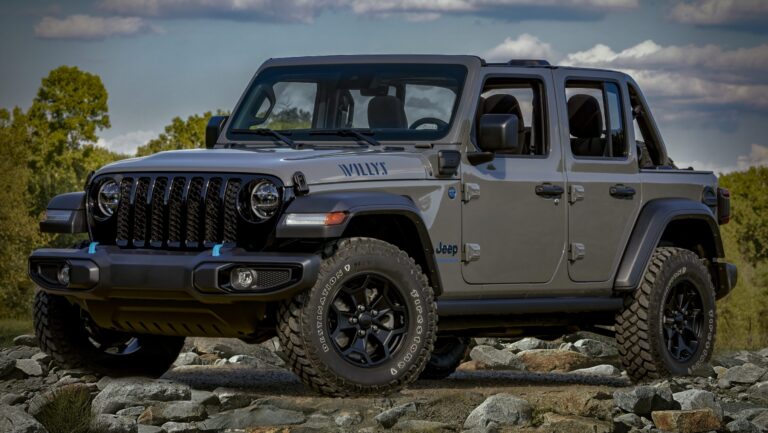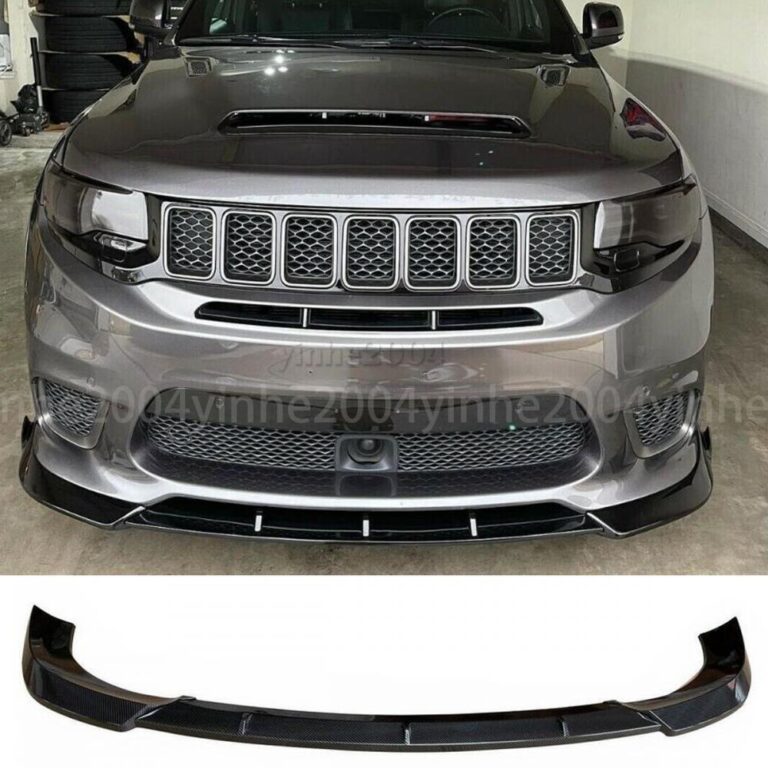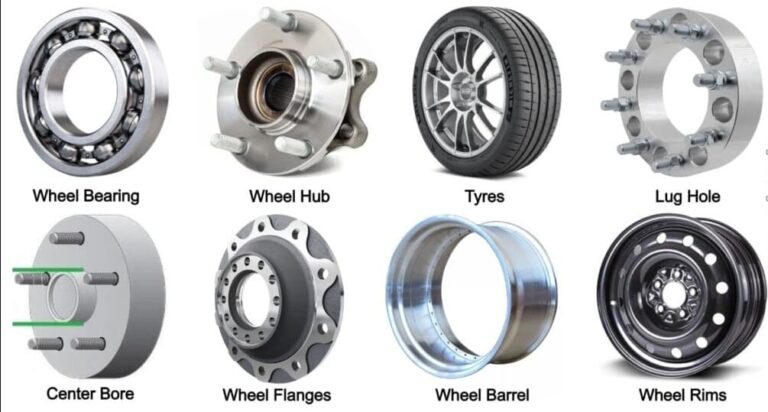1998 Jeep Cherokee Sport 4×4 For Sale: Your Ultimate Buyer’s Guide
1998 Jeep Cherokee Sport 4×4 For Sale: Your Ultimate Buyer’s Guide jeeps.truckstrend.com
In the vast landscape of the used car market, few vehicles command the same cult following and enduring respect as the Jeep Cherokee XJ generation. Among its most sought-after iterations is the 1998 Jeep Cherokee Sport 4×4, a rugged, dependable, and surprisingly versatile SUV that continues to capture the hearts of off-road enthusiasts, DIY mechanics, and anyone seeking a no-nonsense, go-anywhere machine. When a 1998 Jeep Cherokee Sport 4×4 comes up for sale, it represents more than just a used vehicle; it’s an opportunity to acquire a piece of automotive history, a blank canvas for adventure, and a testament to straightforward, robust engineering.
This comprehensive guide is designed to equip you with all the knowledge you need to navigate the process of finding, evaluating, and ultimately purchasing a 1998 Jeep Cherokee Sport 4×4 that’s currently for sale. We’ll delve into what makes these vehicles so special, what to look for, common pitfalls to avoid, and how to ensure you’re making a wise investment in a truly iconic American SUV.
1998 Jeep Cherokee Sport 4×4 For Sale: Your Ultimate Buyer’s Guide
The Enduring Appeal of the XJ Cherokee
The Jeep Cherokee XJ, produced from 1984 to 2001, stands as one of the most successful and influential SUVs ever made. Its unibody construction was revolutionary for its time, offering a lighter, more car-like ride without sacrificing the legendary off-road capability Jeep was known for. The 1998 model year falls squarely within the "facelifted" XJ era (1997-2001), which brought updated exterior styling, a more refined interior, and improved ergonomics while retaining the core mechanical robustness that defines the XJ.
The Sport trim level specifically appealed to buyers looking for a more utilitarian and capable package, often foregoing some of the luxury amenities of the Limited or Classic trims in favor of a simpler, more rugged setup. Its compact size, excellent approach and departure angles, and the legendary 4.0-liter inline-six engine make it an unparalleled choice for navigating both urban jungles and challenging trails. For many, the XJ represents the perfect balance between daily drivability and serious off-road prowess, and the 1998 Sport 4×4 embodies this ideal perfectly.
What to Look For: Key Features of the 1998 Sport 4×4
Understanding the core components of a 1998 Jeep Cherokee Sport 4×4 is crucial before you begin your search. Knowing what came standard and what optional features might be present will help you assess the value and suitability of any particular "for sale" listing.
- Engine: The Indestructible 4.0L "PowerTech" I6
- This is the heart and soul of the XJ. Renowned for its reliability, torquey power delivery, and longevity, the 4.0L inline-six is a major reason for the XJ’s enduring popularity. In 1998, it produced 190 horsepower and 225 lb-ft of torque, ample for both highway cruising and low-speed off-roading. Look for signs of good maintenance, such as regular oil changes and a clean engine bay (though some leaks are common, as detailed below).
- Transmission Options:

- AW4 Automatic: The vast majority of 1998 XJs, especially Sport 4×4 models, came with the Aisin-Warner AW4 4-speed automatic transmission. This unit is incredibly robust and reliable when properly maintained. Check for smooth shifts, no slipping, and proper engagement in all gears.
- AX-15 Manual: While rare in 1998 Sport 4x4s, some were equipped with the Aisin AX-15 5-speed manual transmission. These are highly sought after by enthusiasts for their direct control and even greater durability. Test clutch engagement and gear changes carefully.
- Transfer Case: Your 4×4 Brain

- NP231 Command-Trac: This part-time 4WD system was standard on most Sport models. It offers 2WD, 4-High (part-time), Neutral, and 4-Low. It’s robust and simple, ideal for serious off-roading. Ensure it engages smoothly into all positions without grinding or excessive force.
- NP242 Selec-Trac: Less common on the Sport, but sometimes found, the NP242 offers 2WD, 4-Part Time, 4-Full Time, Neutral, and 4-Low. The "Full-Time" option is excellent for mixed-condition driving (e.g., snowy roads that clear up) as it can be used on pavement. Check for proper engagement in all settings.
- Axles:
- Front: Dana 30: A common and robust front axle, found on nearly all XJs.
- Rear: Dana 35c or Chrysler 8.25: Earlier XJs and some 1998 models with smaller engines might have the Dana 35c, which is generally considered weaker for heavy off-roading. Many 1998 Sport 4x4s with the 4.0L engine received the stronger Chrysler 8.25 rear axle (identifiable by its flat bottom diff cover). If you plan serious off-roading, the 8.25 is preferable.
- Sport Trim Specifics:
- Typically features cloth seats, black exterior trim (grille, bumpers, mirrors), and a more basic interior compared to the upscale Limited. This simplicity is often a benefit, as there are fewer complex electronics to fail.

Inspecting a 1998 Cherokee Sport For Sale: A Buyer’s Checklist
When you find a 1998 Jeep Cherokee Sport 4×4 for sale, a thorough inspection is paramount. Don’t rush this process.
- Mechanical Inspection (Under the Hood and Beneath):
- Engine: Look for oil leaks (especially the common rear main seal leak – often minor but present), coolant leaks, and any signs of overheating (discolored coolant, residue). Listen for unusual noises (knocking, ticking – the 4.0L can have a lifter tick that’s usually harmless, but loud knocking is bad). Check the condition of belts, hoses, and battery terminals.
- Transmission: Check fluid level and color (should be reddish, not brown or black). During a test drive, ensure smooth shifts without hesitation or clunking.
- Transfer Case: Engage 4-High and 4-Low in a safe, unpaved area. Listen for grinding.
- Drivetrain: Inspect U-joints (front and rear drive shafts) for play or rust. Check differentials for leaks.
- Suspension: Look for sagging (especially the rear leaf springs), worn bushings, or leaking shocks. Bounce each corner to test shock absorption.
- Brakes: Check rotor and pad wear. Test the parking brake.
- Steering: With the vehicle off, wiggle the steering wheel. Excessive play could indicate worn steering box, tie rods, or ball joints.
- Body & Frame (The Rust Battle):
- Unibody Rails: Critically inspect the unibody frame rails, particularly where the control arms attach. Rust here is a serious issue.
- Rockers & Floorboards: Check under the carpet and along the rocker panels for rust holes.
- Fenders & Doors: Look for rust around wheel arches, door bottoms, and the tailgate.
- Accident Damage: Look for inconsistent panel gaps, mismatched paint, or signs of poorly repaired damage.
- Interior Assessment:
- Seats & Headliner: Check for tears, stains, and the infamous sagging headliner (a very common XJ issue, but easily fixed).
- Electronics: Test all windows, locks, lights, wipers, AC/heater, and the radio.
- Odors: Musty smells could indicate water leaks or mold.
- Tires: Check tread depth and look for uneven wear, which could signal alignment issues. Note the tire age (DOT date code).
- Documentation: Ask for service records. A well-documented history is a strong indicator of a cared-for vehicle. Verify the VIN on the title matches the vehicle.
Understanding Common Issues and Solutions
No vehicle is perfect, and the XJ has a few well-known quirks. Knowing these in advance will help you anticipate potential repairs.
- Rust: The biggest enemy of the XJ. Focus on the unibody frame rails, rocker panels, and floorboards. Surface rust is common and manageable; structural rust is a deal-breaker.
- Rear Main Seal (RMS) Leak: Almost every 4.0L will have some seepage from the RMS. It’s often a minor drip, not a gush. Many owners choose to live with it rather than undertake the labor-intensive repair unless it’s severe.
- Headliner Sag: Extremely common. The adhesive fails over time. An easy DIY fix with new fabric and spray adhesive.
- Cooling System: The original cooling system can be a weak point. Ensure it has a reliable electric fan, and check the radiator and water pump for leaks. Upgrades like an aluminum radiator are popular.
- Electrical Gremlins: Window motors, blower motors, and various sensors can fail. Most are relatively simple and inexpensive to replace.
- Crank Position Sensor (CPS): A common failure point that can cause no-start conditions or stalling. Relatively easy to replace.
The Value Proposition: Why Buy a 1998 XJ Today?
Despite their age, 1998 Jeep Cherokee Sport 4x4s continue to be highly desirable, offering a compelling blend of attributes:
- Affordability: Compared to newer SUVs with similar capabilities, the XJ is a budget-friendly entry into the 4×4 world.
- Reliability: The 4.0L engine, when maintained, is incredibly durable. These vehicles are known for racking up hundreds of thousands of miles.
- Off-Road Capability: Stock or mildly modified, the XJ is a surprisingly capable off-roader, thanks to its short wheelbase, solid axles, and robust drivetrain.
- Aftermarket Support: The XJ boasts one of the largest and most active aftermarket communities. Parts are plentiful and affordable, from lift kits and bumpers to engine components.
- Simplicity & DIY-Friendliness: With fewer complex electronics than modern vehicles, the XJ is relatively easy for the average enthusiast to work on, saving on labor costs.
- Potential for Appreciation: Clean, well-maintained, and unmolested XJs are slowly gaining classic status, meaning their value might hold or even appreciate over time.
Tips for a Successful Purchase
- Set a Realistic Budget: Don’t just factor in the purchase price. Account for potential immediate repairs, maintenance items (fluids, spark plugs, filters), and any desired modifications.
- Research Market Prices: Use online classifieds (Facebook Marketplace, Craigslist, dedicated Jeep forums, Bring a Trailer for high-end examples) to gauge fair prices in your region based on condition and mileage.
- Test Drive Thoroughly: Drive at various speeds, on different road surfaces, and if possible, engage 4WD. Listen for unusual noises, feel for vibrations, and check steering and braking response.
- Get a Pre-Purchase Inspection (PPI): If you’re serious about a vehicle, invest in a PPI by an independent mechanic who is familiar with older Jeeps. This can uncover issues you might miss.
- Negotiate Confidently: Armed with your inspection findings and market research, be prepared to negotiate the price.
- Consider Insurance and Registration: Older vehicles can sometimes be cheaper to insure, but always get a quote before buying.
Price Table: 1998 Jeep Cherokee Sport 4×4 Estimated Value Ranges
The price of a 1998 Jeep Cherokee Sport 4×4 for sale can vary significantly based on condition, mileage, maintenance history, modifications, and regional demand. This table provides a general guideline:
| Condition Category | Description





